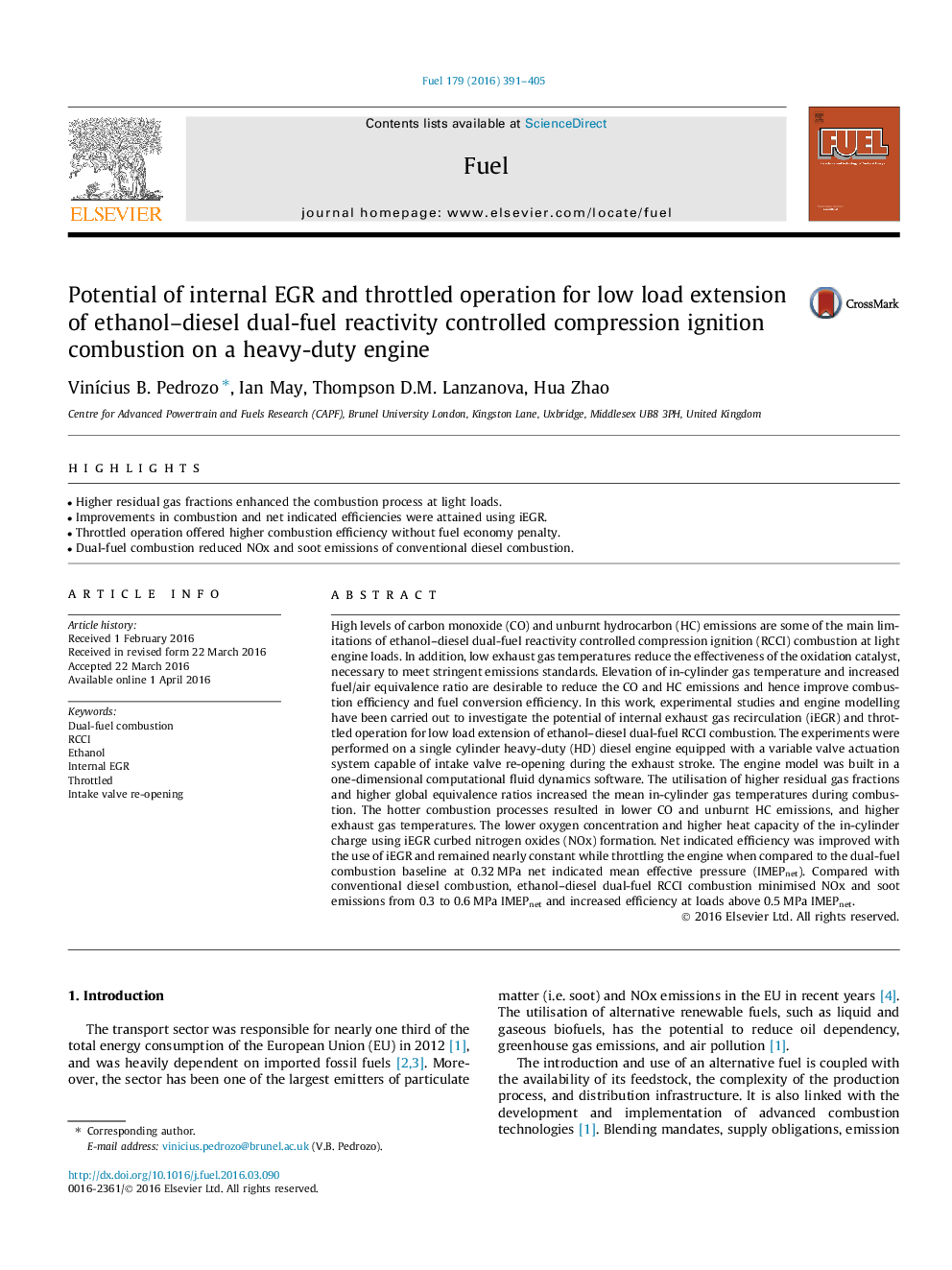| کد مقاله | کد نشریه | سال انتشار | مقاله انگلیسی | نسخه تمام متن |
|---|---|---|---|---|
| 205108 | 461096 | 2016 | 15 صفحه PDF | دانلود رایگان |

• Higher residual gas fractions enhanced the combustion process at light loads.
• Improvements in combustion and net indicated efficiencies were attained using iEGR.
• Throttled operation offered higher combustion efficiency without fuel economy penalty.
• Dual-fuel combustion reduced NOx and soot emissions of conventional diesel combustion.
High levels of carbon monoxide (CO) and unburnt hydrocarbon (HC) emissions are some of the main limitations of ethanol–diesel dual-fuel reactivity controlled compression ignition (RCCI) combustion at light engine loads. In addition, low exhaust gas temperatures reduce the effectiveness of the oxidation catalyst, necessary to meet stringent emissions standards. Elevation of in-cylinder gas temperature and increased fuel/air equivalence ratio are desirable to reduce the CO and HC emissions and hence improve combustion efficiency and fuel conversion efficiency. In this work, experimental studies and engine modelling have been carried out to investigate the potential of internal exhaust gas recirculation (iEGR) and throttled operation for low load extension of ethanol–diesel dual-fuel RCCI combustion. The experiments were performed on a single cylinder heavy-duty (HD) diesel engine equipped with a variable valve actuation system capable of intake valve re-opening during the exhaust stroke. The engine model was built in a one-dimensional computational fluid dynamics software. The utilisation of higher residual gas fractions and higher global equivalence ratios increased the mean in-cylinder gas temperatures during combustion. The hotter combustion processes resulted in lower CO and unburnt HC emissions, and higher exhaust gas temperatures. The lower oxygen concentration and higher heat capacity of the in-cylinder charge using iEGR curbed nitrogen oxides (NOx) formation. Net indicated efficiency was improved with the use of iEGR and remained nearly constant while throttling the engine when compared to the dual-fuel combustion baseline at 0.32 MPa net indicated mean effective pressure (IMEPnet). Compared with conventional diesel combustion, ethanol–diesel dual-fuel RCCI combustion minimised NOx and soot emissions from 0.3 to 0.6 MPa IMEPnet and increased efficiency at loads above 0.5 MPa IMEPnet.
Journal: Fuel - Volume 179, 1 September 2016, Pages 391–405